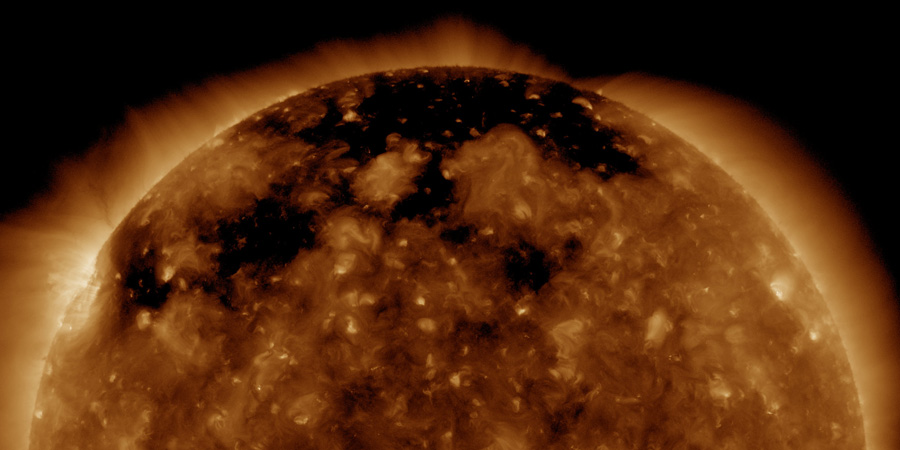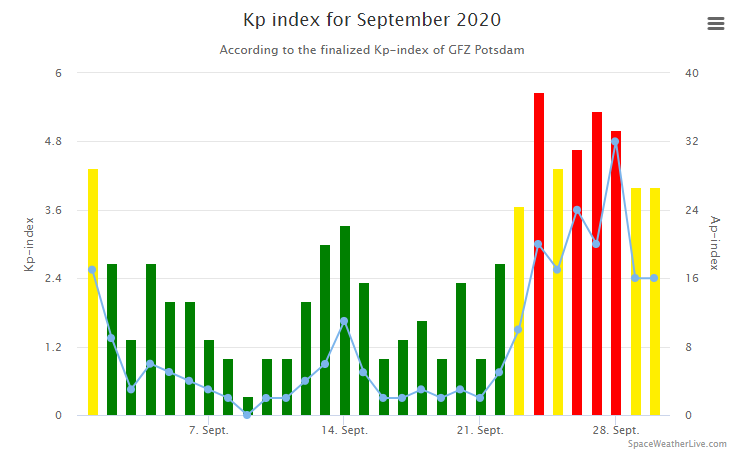Coronal hole faces Earth
Tuesday, 20 October 2020 15:35 UTC

The NOAA SWPC has issued a minor geomagnetic storm (G1) watch for this Thursday (22 October) as a high speed solar wind stream from the northern polar coronal hole is expected to arrive at Earth. This is the same coronal hole which caused multiple days with geomagnetic storm conditions (G1-G2) last month and produced solar wind speeds around 650km/s at our planet.

While the NOAA SWPC does not look further than three days into the future, we take a look at our Sun with the help of SDO at a wavelength of 193 Ångström (header image). What we can see is that this coronal hole is of a similar size as it was during the previous rotation and that means we should again expect multiple days with enhanced solar wind conditions at our planet. We can extend the minor G1 geomagnetic storm watch which starts this Thursday (22 October) for at least three more days based on the size of this coronal hole and its track record from the previous rotation. Expect enhanced geomagnetic conditions with occasional minor geomagnetic storm conditions all the way until at least Sunday which would be the 25th of October. Charge those camera batteries, we could be in for some very decent auroral displays in the coming days! Good luck!
Thank you for reading this article! Did you have any trouble with the technical terms used in this article? Our help section is the place to be where you can find in-depth articles, a FAQ and a list with common abbreviations. Still puzzled? Just post on our forum where we will help you the best we can!
Latest news
Latest forum messages
More topicsSupport SpaceWeatherLive.com!
A lot of people come to SpaceWeatherLive to follow the Sun's activity or if there is aurora to be seen, but with more traffic comes higher server costs. Consider a donation if you enjoy SpaceWeatherLive so we can keep the website online!

Space weather facts
| Last X-flare | 2024/12/08 | X2.2 |
| Last M-flare | 2024/12/26 | M7.3 |
| Last geomagnetic storm | 2024/12/17 | Kp5+ (G1) |
| Spotless days | |
|---|---|
| Last spotless day | 2022/06/08 |
| Monthly mean Sunspot Number | |
|---|---|
| November 2024 | 152.5 -13.9 |
| December 2024 | 119.3 -33.2 |
| Last 30 days | 122 -35.7 |


